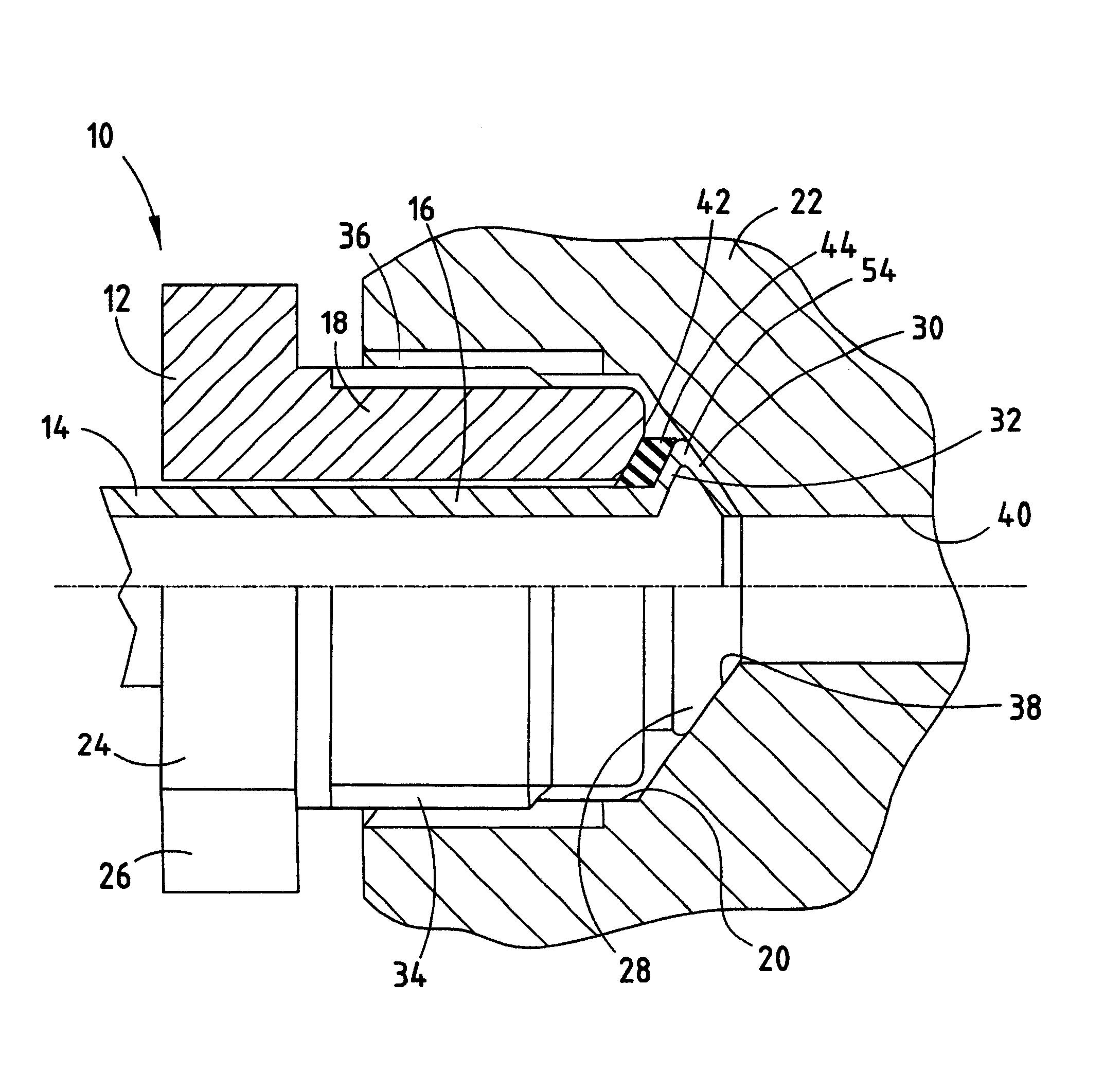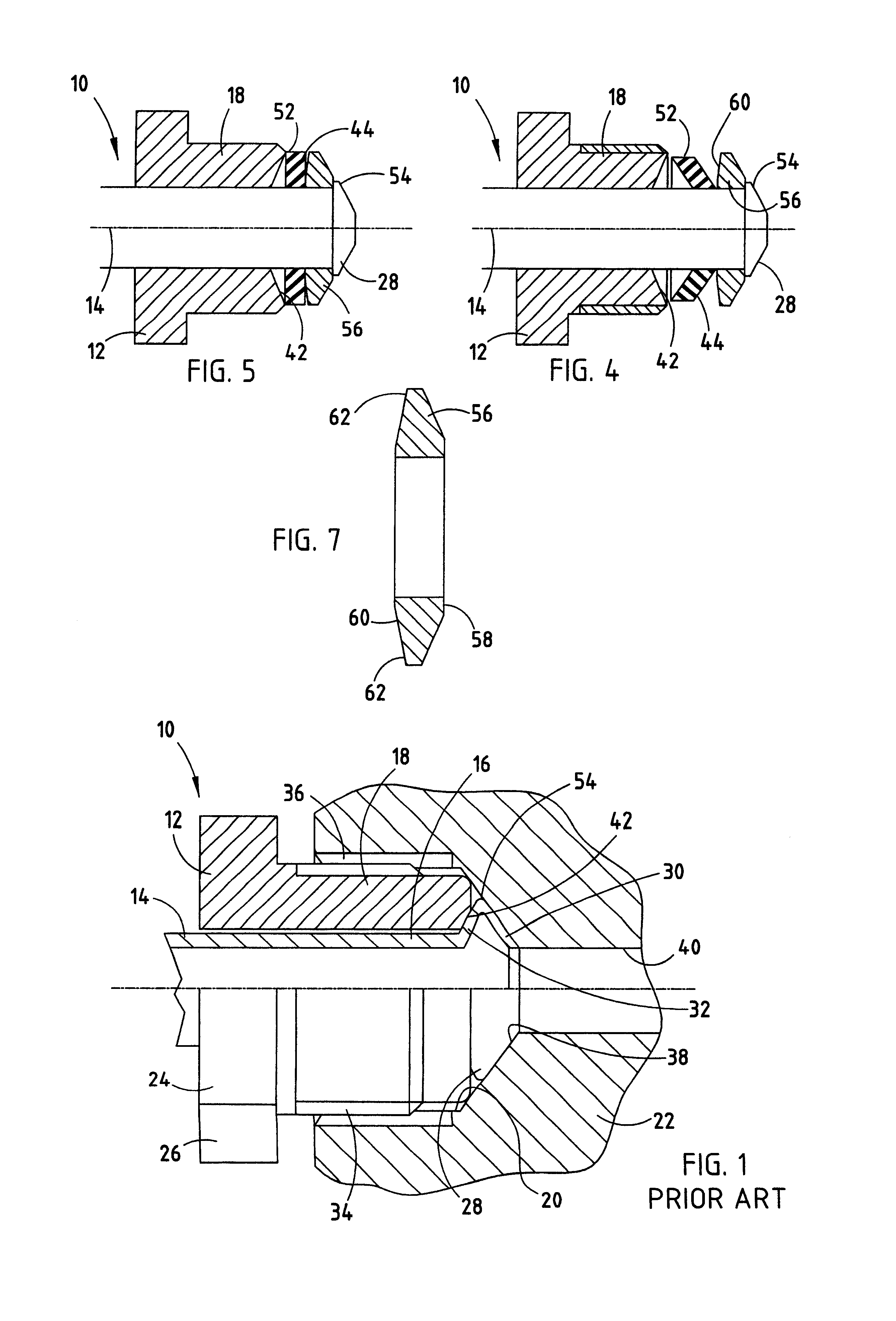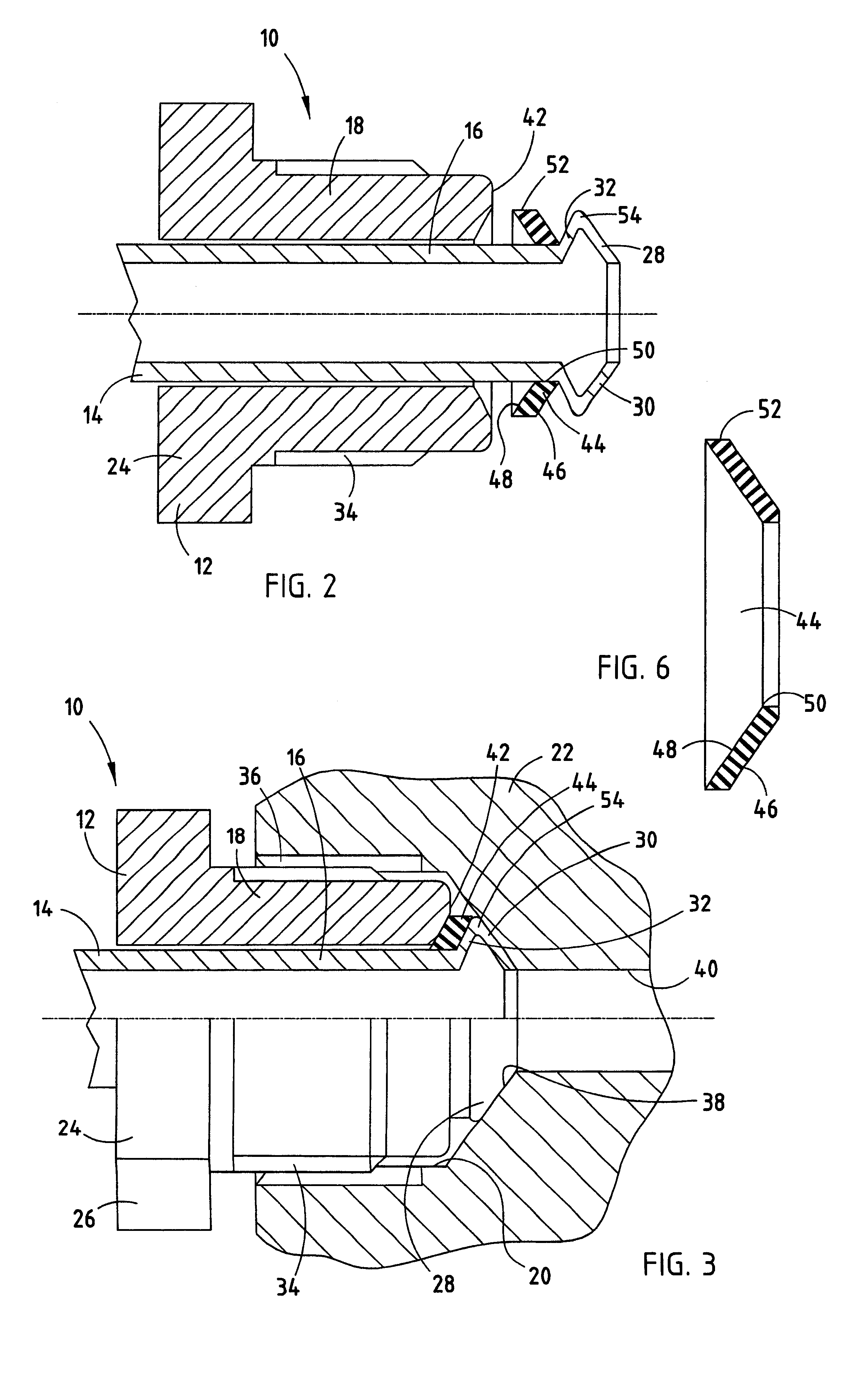Brake tube connector
a technology of brake tube and connector, which is applied in the direction of hose connection, braking system, braking components, etc., can solve the problems of connector leakage, inability to compress the flared tube end sufficiently within the mating hole, and inability to accept hydraulic brake fluid leakag
- Summary
- Abstract
- Description
- Claims
- Application Information
AI Technical Summary
Benefits of technology
Problems solved by technology
Method used
Image
Examples
Embodiment Construction
The best mode for carrying out the invention is resented in terms of the preferred embodiment, wherein similar reference characters designate corresponding features throughout the figures of the drawings. Referring now to the drawings, particularly FIG. 1, there is shown a connector 10 of the prior art used to seal an elongated tube to a body for flow of a fluid through said body. The connector 10 includes an elongated nut 12 that is disposed about a length of brake line or tube 14 near a proximate end 16 of the tube 14. As is conventional, the nut 12 has a threaded proximate end 18 that is adapted to engage a threaded hole 20 in the brake component 22. A distal end 24 of the nut 12 is provided with flats 26, as is conventional, for driving the nut 12 into the hole 20 to a specified torque by an air-driven gun. As shown, connector 10 of the prior art includes a flare 28 at the proximate end 16 of the tube 14. The flare 28, as is known, is provided with an interior face 30 and an ext...
PUM
 Login to View More
Login to View More Abstract
Description
Claims
Application Information
 Login to View More
Login to View More - R&D
- Intellectual Property
- Life Sciences
- Materials
- Tech Scout
- Unparalleled Data Quality
- Higher Quality Content
- 60% Fewer Hallucinations
Browse by: Latest US Patents, China's latest patents, Technical Efficacy Thesaurus, Application Domain, Technology Topic, Popular Technical Reports.
© 2025 PatSnap. All rights reserved.Legal|Privacy policy|Modern Slavery Act Transparency Statement|Sitemap|About US| Contact US: help@patsnap.com



